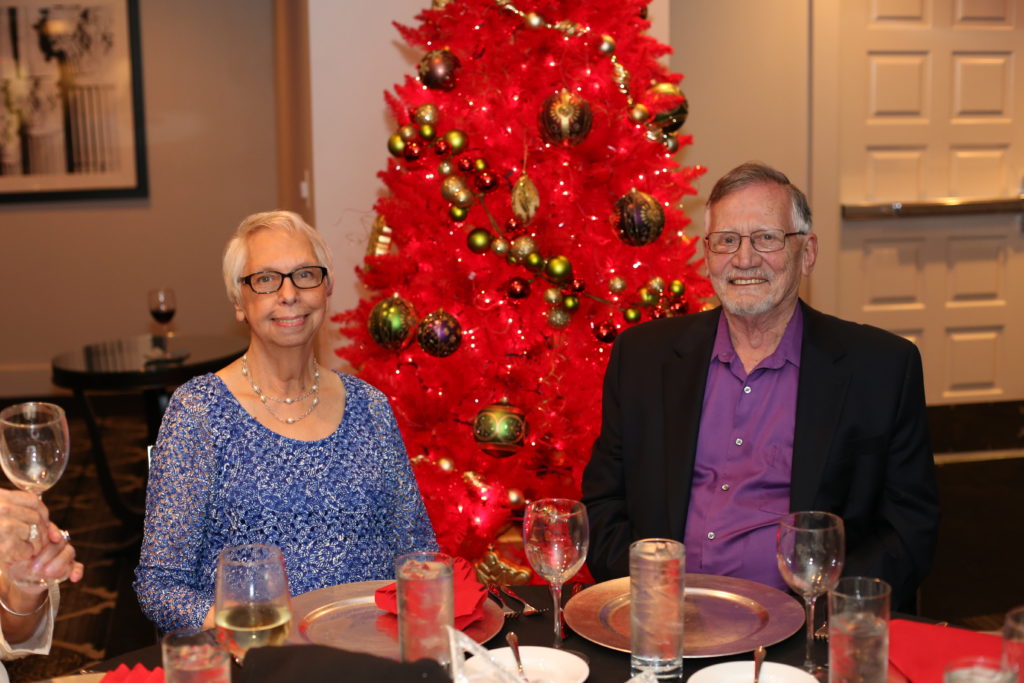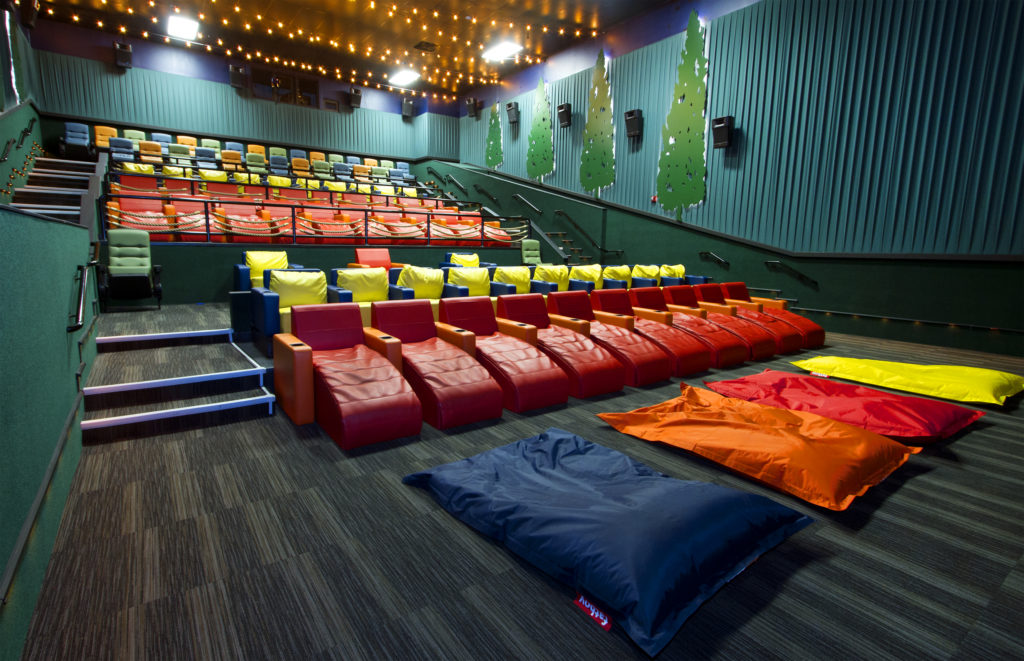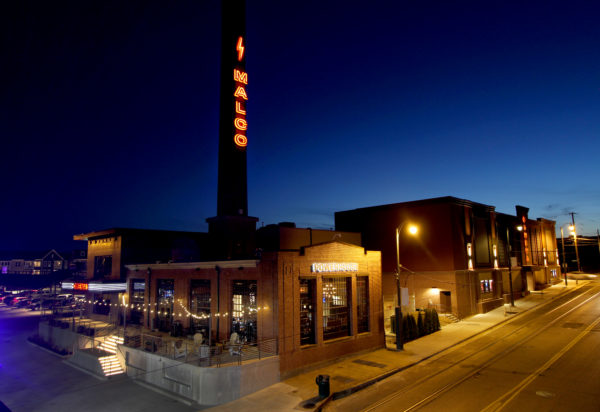1981, says Michael Cummings, was not the best time to be an architect. “I distinctly remember a professor telling me, ‘It’s a great time to be in school. There’s not an architecture job to be had anywhere.’”
Nonetheless, 1981 was the year when architect Ted Knapp took a risk and—with a combination of hard work, planning, and a little bit of lucky timing—co-founded (with wife, Sue) TK Architects, still going strong in 2021 as the firm celebrates its 40th anniversary.
According to Cummings, TK Architects senior principal, Knapp, who retired from the firm in 2011 worked at several architecture firms in the Kansas City area before hitting a professional wall: “He’s 40 years old and there’s nowhere for him to go in his career. There’s no other position to aspire to.” Striking out on his own and founding TK Architects—“to be in charge of [his] own destiny,” says Cummings—may have ended in failure, given the state of the economy at the time. Luckily, TK Architects had a weighty factor in the plus column: they shared, and still share, a home city with AMC Theatres.
That AMC ended up being a key early client for TK Architects—and that the year of TK Architects’ founding saw both companies smack-dab in the middle of the construction-heavy multiplex boom—was a product of “really interesting foresight and thought” on Knapp’s part, says Cummings. At an earlier job, he’d done design work for shopping centers, which familiarized him with AMC, whose corporate headquarters was three blocks from his office. Despite a noncompete clause, Knapp would reach out to cinema veteran Larry Jacobson, then senior V.P. at AMC Theatres, to ask about “hot fishing tips”; this bit of entrepreneurial subterfuge led to architecture jobs with AMC, designed over the weekend after the chain held its Friday real estate meetings. “When I started a few years later, that was still a regular part of the weekly routine: Wait for the real estate call on Friday afternoon and figure out whether you’re going to have to work the weekend or not to get something done for it,” says Cummings. Though he admits that it was “a bit of luck” that the multiplex boom was under way during TK Architects’ early years, “it certainly wasn’t a bit of luck that AMC was a targeted potential client. [The hard work] was not luck at all. Or all the design skill that went into being able to do those layouts in a few hours over a weekend, to let them make a decision whether a site made any sense.”

And it wasn’t luck that would carry TK Architects along for another four decades. In 1987, says Cummings, AMC Founder and CEO Stan Durwood claimed that every theater that needed to be built in the U.S. already had been, which ultimately had two major impacts on TK Architects’ future. One: In search of new U.S. clients, they got involved in the larger exhibition community, attending industry events like ShoWest (now CinemaCon), CineEurope, CineAsia, and other conferences hosted by the NAC and TEA, the forerunner to ICTA.
Secondly, when AMC went to Europe to try and establish an international presence there, TK hopped across the pond as well, founding an office in London in 1995. In the decades since, TK Architects has worked on entertainment projects in more than 50 countries. They also, in addition to cinemas, do work for entertainment, food, and retail venues, including those in the emerging cinema entertainment center field, profiled in depth in our August 2020 issue.
In listening to the stories of vendors, whether seating or concessions, technology or architecture, one gets a sense of the rich and still-evolving history of theatrical exhibition—and the case is no different with TK Architects. In the firm’s early years, their designs for AMC under the leadership of Durwood were geared toward an “efficiency rating”—basically, taking a preexisting space (as most theaters were located in shopping centers at that time) and trying to fit as many people as possible into each auditorium for maximum profit. Whether a cinema’s business plan made sense was a matter of simple math: the cost of the lease, the size of the building, and the square footage required per seat. “I remember to this day a call with Ted and Larry Jacobson—they’d worked very hard on his plan to get something to fit. It was the first one they did, and they were so proud.” The plan was taken to Durwood, who right off the bat asked for the efficiency rating. When it proved too low, he responded, “‘Well, that’s terrible. Don’t even show it to me unless you get a 12.’ At the time, that was Stan’s formula, his recipe for what he needed to sign a lease.”
The efficiency-rating era—or the packing-them-in-like-sardines era, whichever you prefer—began to pass with the coming of stadium seating and was fully K.O.’d by AMC’s enthusiastic adoption of recliner seating near the beginning of the 21st century. “We were having a conversation with [exhibition veteran, now CEO of Classic Cinemas] Chris Johnson,” says Cummings, “and he’s like, ‘It’s counterintuitive. It just makes no mathematical sense. But I see the results. I see the business. I see the dollars come from a location before and after. It makes no sense. But it works.’”
Recliner seating swept the North American market, and other changes to the cinematic status quo followed—with TK Architects in the thick of it, figuring out how to design all these new trends that were taking hold in the industry. With dine-in came the need for theaters to have kitchens. More recently, the increased adoption of touchless technologies—spurred by Covid, but certain to remain post-pandemic per TK Architects Principal Theresa English—has had its own impact on theater design. Cinema entertainment centers are an area in which Cummings sees room for continued design innovation, as are food and beverage and microcinemas—or, speaking in a more general sense, designs for “more versatile spaces,” says English, that allow for cinemas to more easily experiment with an expanded variety of content.

Although North American cinema design has trended toward the warmer and more inviting in recent years—kind of a “your-living-room-away-from-home feeling,” says Cummings—in certain overseas markets (including China), “they’re a lot more experimental and a lot more willing to try something and to look for something that’s eye-catching.” While Cummings would love the opportunity to provide more glitz and glamour, even something borderline Vegas, he says, referring to some cinemas he’s visited in India—“I don’t know how positively the U.S. market will react to that. And I’m not talking about the clients. I’m talking about the consumers.
“It depends on the demographics, and it depends on the market,” he continues. “I also think about the success that Alamo [Drafthouse Cinemas] or Everyman [Cinemas] have had in their markets with creating a very unique aesthetic. … It’s really about being part of the communities that they’re in.”
Meanwhile, TK Architects upped its own technological game over the decades, shifting from AutoCAD design software to Revit, allowing them and their customers to look at potential sightlines in 3-D. “I could look at [a potential design] in curved rows with a curved screen and tell [a client], ‘Yeah, you’ll be able to see the bottom of the screen,’ or ‘No, you won’t,’” says English. “We adopted that earlier than I would say our competitors did. It was a unique edge that we had, to be able to [say to] cinemas, ‘Your technology has changed, and our technology has changed, and this is how we’re helping you create a better patron experience.’”
“Patron experience” must be at the center of every cinema, which the designers at TK Architects will remind a client if its own creative vision clashes with practical and efficient design. Spend money on things your customers will actually notice, says Cummings: Spacious-enough bathroom stalls, not top-of-the-line plumbing systems. “They care if you walk into an auditorium and there’s a space to gather yourself and figure out where you’re going to go”—versus a “not fully realized” space at the back of the auditorium “that only half a dozen patrons actually see during the course of the movie. It’s about putting the space and spending the money where the customer will appreciate it.” All this, says Cummings, while capturing “each client’s unique culture and personality”—whether that’s hewing to a very specific brand aesthetic or, with midsize exhibitors on down, working with the client to understand their vision so that it can be expressed through design.
TK Architects started in a time of economic precarity, when exhibitors were taking risks and exploring innovations that would lead the world of cinema into the next century stronger than ever before. As TK turns 40, the world of exhibition faces profound challenges yet again—which it is meeting, as ever before, with creativity and entrepreneurship, all underpinned by a love of going to the movies.



Share this post